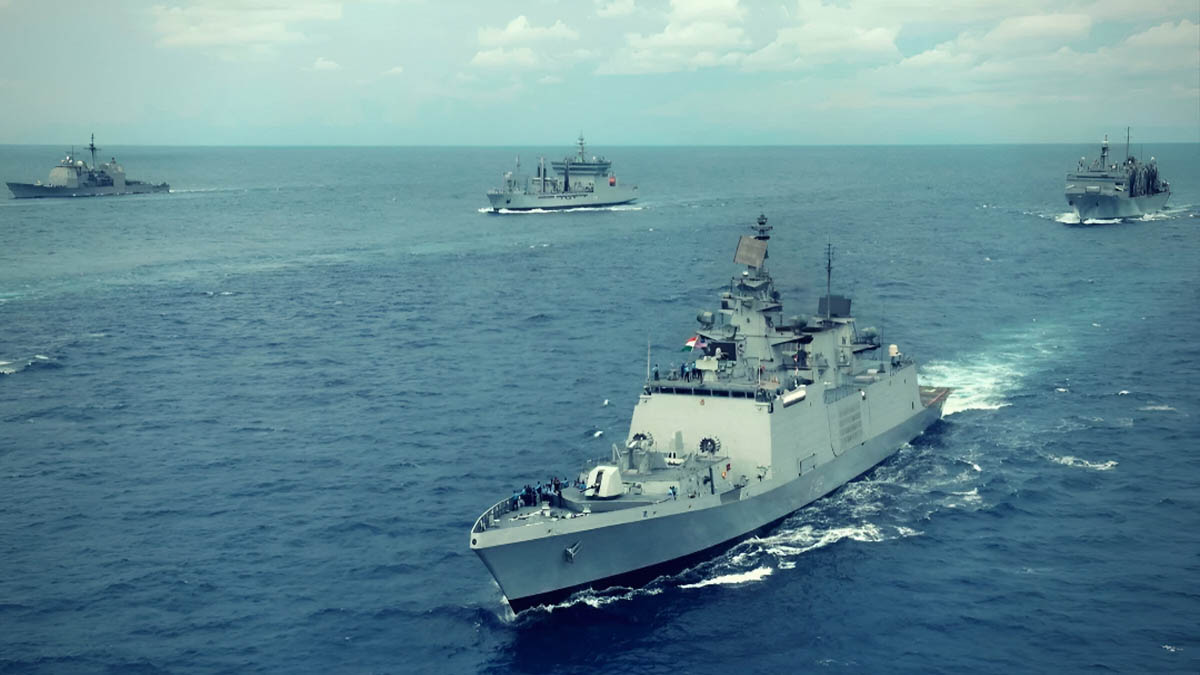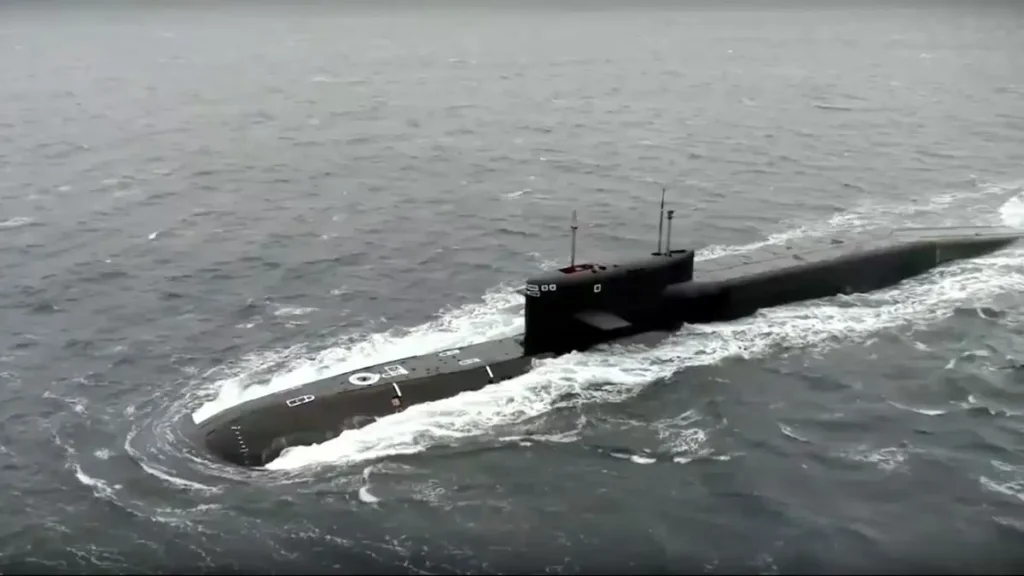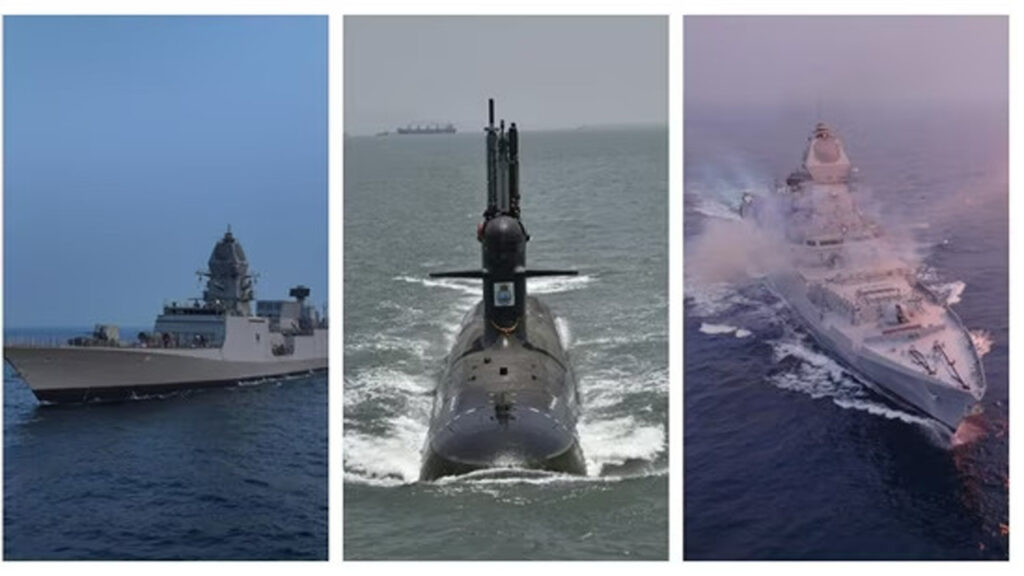Now Reading: Indian Navy’s ‘Trident of Power’ Signals Readiness Amidst Pakistan Tensions
-
01
Indian Navy’s ‘Trident of Power’ Signals Readiness Amidst Pakistan Tensions
Indian Navy’s ‘Trident of Power’ Signals Readiness Amidst Pakistan Tensions

New Delhi: Amidst the escalating tensions with Pakistan following the deadly terror attack in Jammu and Kashmir’s Pahalgam on April 22nd, the Indian Navy has projected a strong message of its combat readiness by showcasing its ‘Trident of Power’. The image, shared on social media platform X (formerly Twitter) by the Indian Navy, features a potent combination of its naval assets: the guided-missile destroyer INS Kolkata, a Dhruv Advanced Light Helicopter (ALH), and a Scorpene-class submarine.
The accompanying caption, “The trident of Naval Power – Above, below and across the waves,” underscores the Navy’s multi-dimensional capabilities to safeguard India’s maritime interests. This display of naval might comes at a crucial juncture as relations between India and Pakistan have significantly deteriorated in the wake of the Pahalgam attack, which claimed the lives of 26 individuals. India has asserted that the attack has “cross-border linkages” to Pakistan, a claim vehemently denied by Islamabad.
In response to the terror attack, India has initiated a series of decisive measures, including the suspension of the Indus Waters Treaty, the closure of the Attari land border crossing – the only operational land route between the two nations – and a downgrading of diplomatic ties. Prime Minister Narendra Modi has also vowed a “harshest response” to the perpetrators and conspirators of the attack, emphasizing that the world stands with India in its fight against terrorism.
The Indian Navy’s ‘Trident’ symbolizes its ability to project power across the maritime domain.
- INS Kolkata: As a Kolkata-class guided-missile destroyer, INS Kolkata represents India’s surface warfare capabilities. These warships are equipped with advanced weaponry and sensors, capable of undertaking a variety of missions, including anti-air, anti-surface, and anti-submarine warfare. Their long-range strike capabilities make them a formidable asset in maintaining maritime security.
- Dhruv Advanced Light Helicopter (ALH): The inclusion of the Dhruv ALH highlights the Indian Navy’s aerial surveillance, search and rescue, and anti-submarine warfare capabilities. While the specific helicopter featured in the image is likely a file photo due to the current grounding of the Dhruv ALH fleet for checks, the ALH generally serves as a versatile platform enhancing the Navy’s operational reach and effectiveness.
- Scorpene-class Submarine: The Scorpene-class submarine embodies the Indian Navy’s underwater prowess. These diesel-electric attack submarines are equipped with advanced stealth features and the capability to launch torpedoes and anti-ship missiles, providing a crucial element of underwater deterrence and offensive capability.
This visual assertion of naval strength follows recent exercises conducted by the Indian Navy in the Arabian Sea, where warships were seen undertaking multiple anti-ship missile firings. These drills served to “revalidate and demonstrate readiness of platforms, systems, and crew for long-range precision offensive strike,” as stated by the Navy. The warships involved in these exercises included Kolkata-class destroyers, as well as Nilgiri and Krivak-class frigates, underscoring the Navy’s commitment to maintaining a high state of operational preparedness.
The current standoff has also witnessed other significant developments, including the expulsion of diplomats from both countries, a blanket ban on all imports from Pakistan by India, and Pakistan’s reciprocal suspension of all trade with India and the closure of its airspace for Indian aircraft. Villages along the Line of Control (LoC) in Pakistan-occupied Kashmir are reportedly preparing bunkers in anticipation of potential military escalation.
While the international community, including the United Nations and countries like Iran, have urged both sides to exercise restraint and seek diplomatic solutions, the Indian Navy’s assertive posturing with its ‘Trident of Power’ sends a clear message of its readiness to defend India’s maritime interests and respond effectively to any potential threats in the region. This display of capability aims to serve as a deterrent and underscores the strategic importance of the Indian Navy in the current geopolitical climate.










